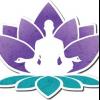CYBERMED LIFE - ORGANIC & NATURAL LIVING
CYBERMED LIFE - ORGANIC & NATURAL LIVING
 Our breath is a combination of body, mind and soul. Many blockades are set up throughout our life, which prevent true experiences of our real life. The breathing therapy is a form of enhanced respiration, which solves the blockades and clears our inner core. With the help of the therapeutic breathing, we are able to reach clarity, energy and joy in our lives.
Our breath is a combination of body, mind and soul. Many blockades are set up throughout our life, which prevent true experiences of our real life. The breathing therapy is a form of enhanced respiration, which solves the blockades and clears our inner core. With the help of the therapeutic breathing, we are able to reach clarity, energy and joy in our lives.
Breath
Most people know how to breathe superficially. Our breathing has evolved as our lives have changed. When we were born, our breathing was even and we had the full potential of usable breathing space. Because of various reasons such as our upbringing, our life experiences, our posture, our lack of movement, etc., our breathing, over the years, has become shallow and one-sided.
Therapeutic breathing is a method that communicates and brings our bodies into contact with our feelings. It is based on an enhanced respiration, which is deeper and faster than usual. The focus of this breathing is located in the upper chest area. This area is associated with our breathing in fearful situations and stressful conditions. In therapeutic breathing, a harmonious flow of breath arises that balances our breathing under guidance. This is a possible gateway to blockages and tension in the body.
Core Experience
Therapeutic breathing will help in our getting an intuitive and holistic grasp of our lifetime. We go about our problems and face with our real potential. We reach our core and then identify ways to develop our personality. The aim of therapeutic breathing corresponds to building the “now” concept in our lives. Therapeutic breathing thematic works and shows lead us to the practical steps for changing our everyday lives.